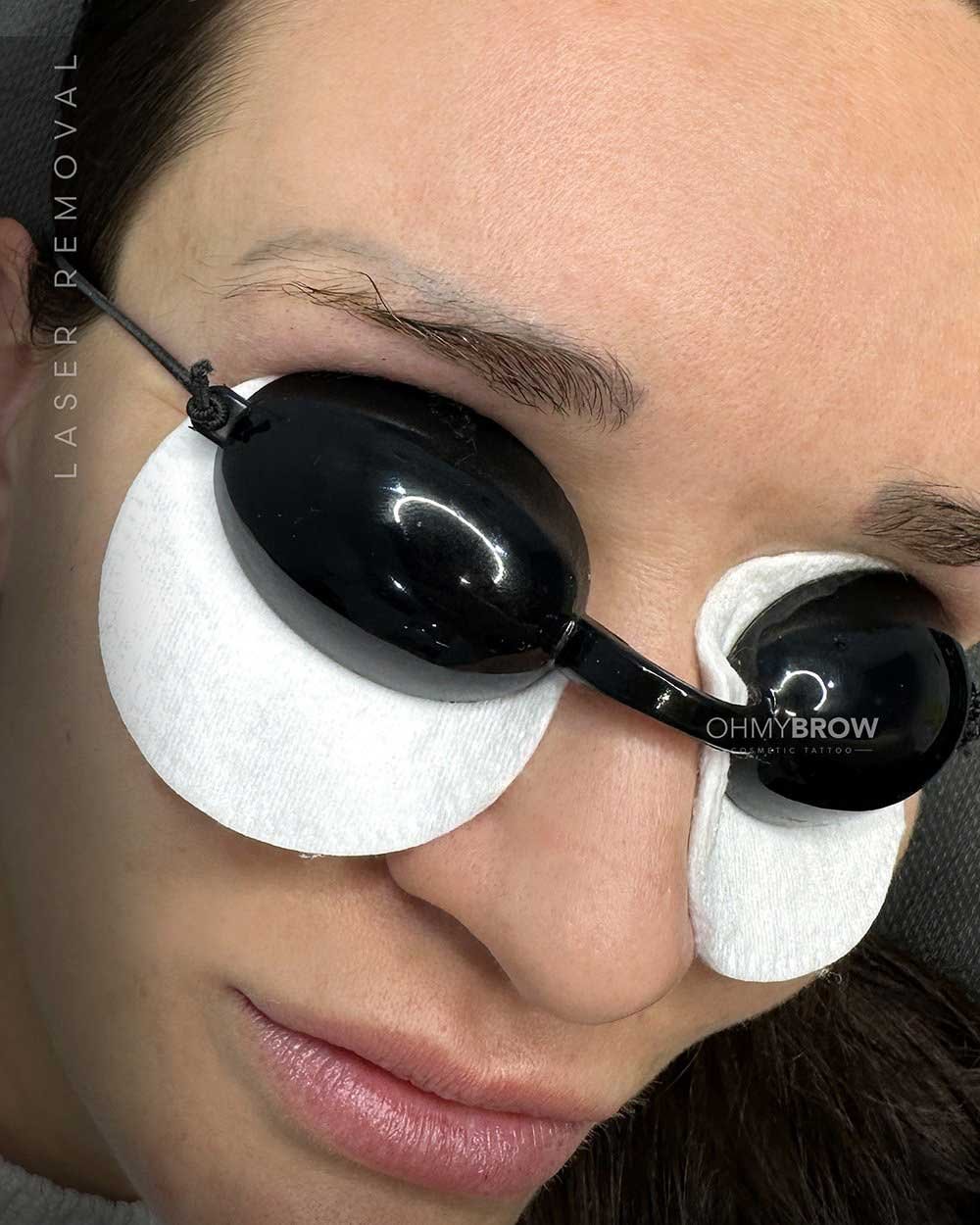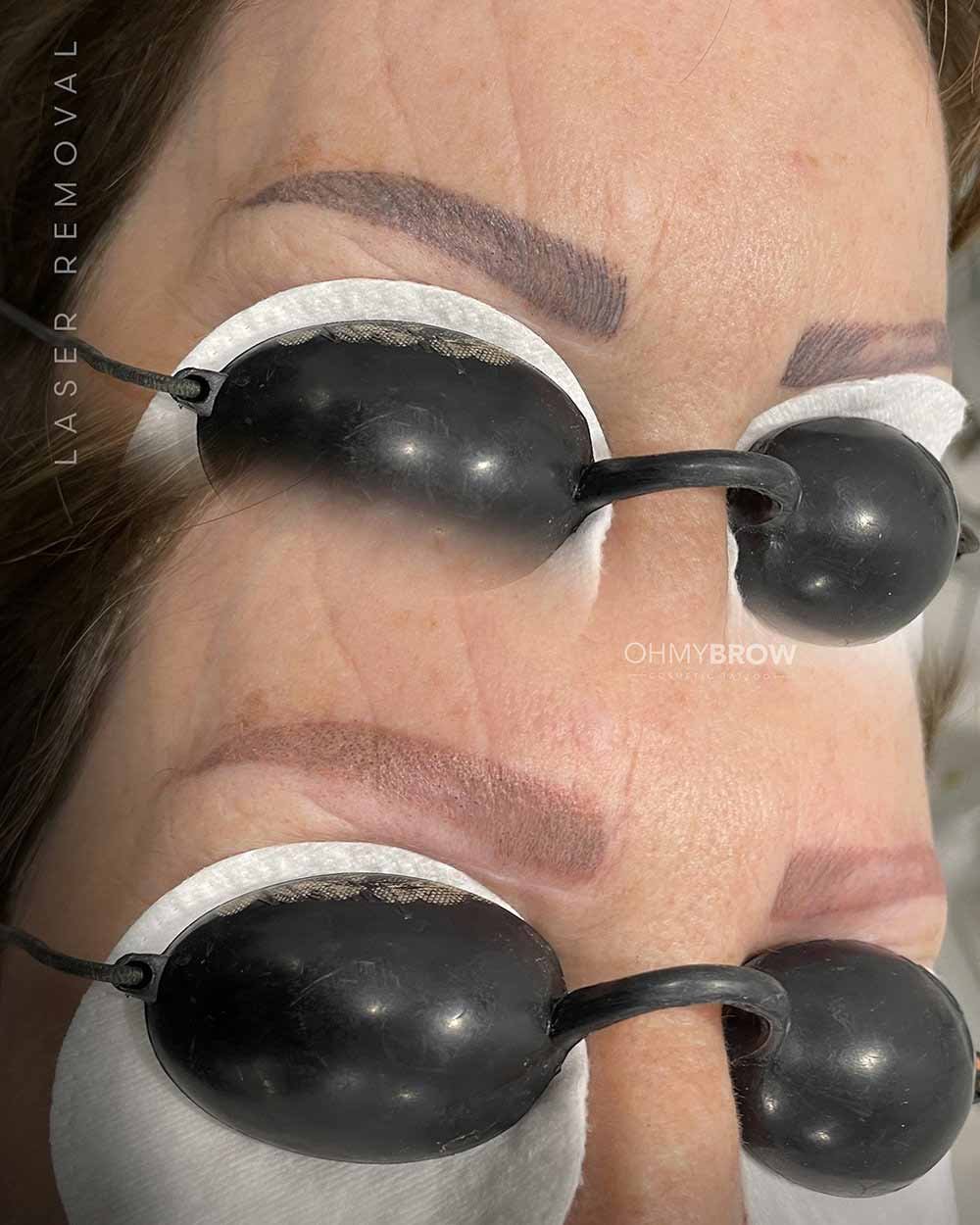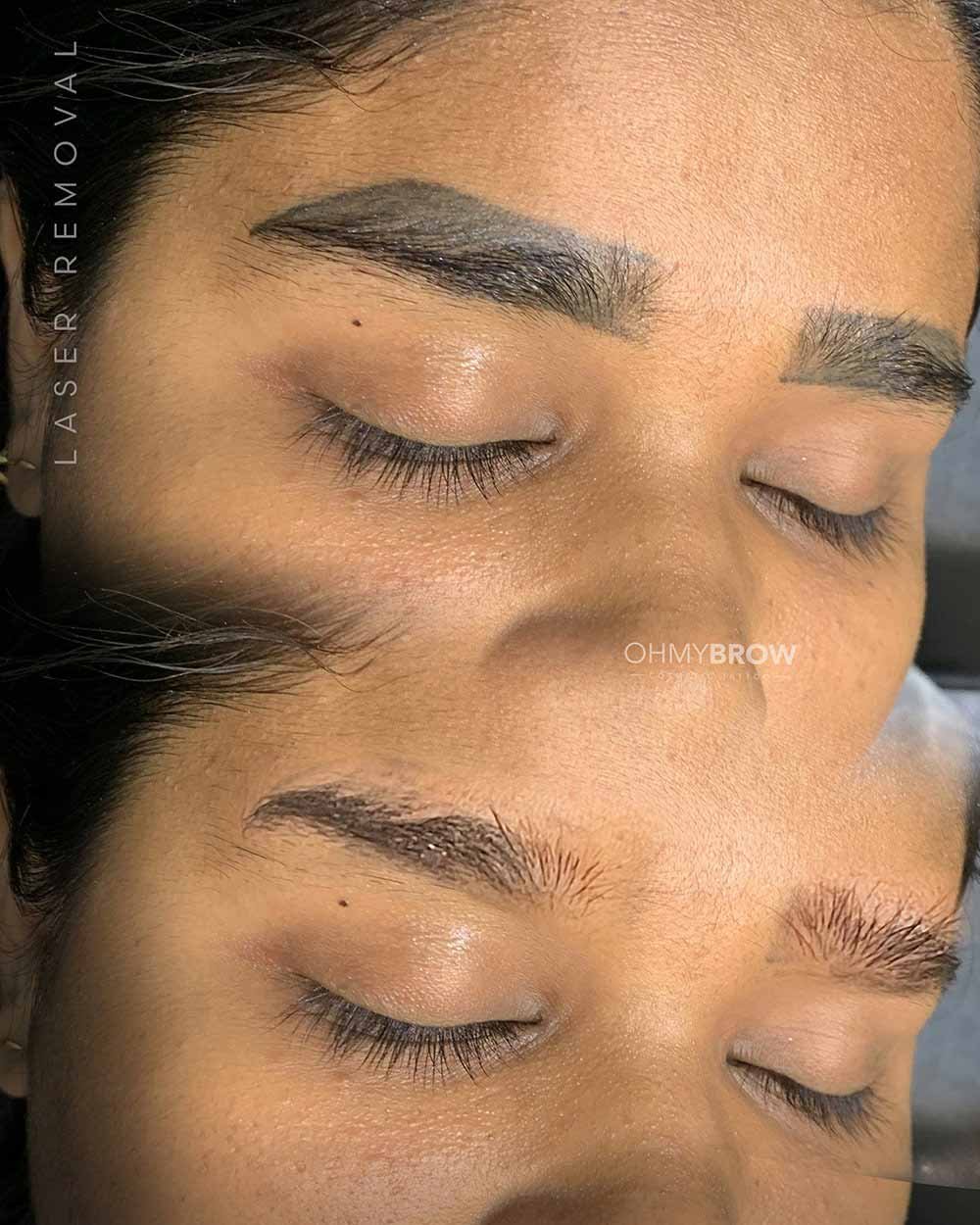10 Laser Eyebrow Tattoo Removal Before and After Cases & What They Had in Common
Written by: Sara Mac @ohmybrow.com.au
Adelaide-based PMU pro Sara Mac embarked on a journey to study and understand the challenges associated with removing old brow tattoos, shedding light on the factors that determine the success of the laser removal process.
Here’s what she learned, along with 10 laser eyebrow tattoo removal before and after case studies.
What Happens When Microblading Goes Wrong: A Case Study by Sara Mac
Trends come and go, so what happens when your client wants to change the look of their brow tattoo or start afresh? Even worse, what would you do if a client came to you with botched brows needing a do-over?
My quest began with a unique laser eyebrow tattoo removal before and after case study involving 100 women who claimed to have botched brows or to be unhappy with the way the tattoo has aged.
These brave participants sought my help in correcting their eyebrows done by others. In the process, I noticed a fascinating pattern emerging from her experiences with permanent makeup removal.
Here are my main takeaways:
Newer Brow Tattoos Are Removed More Easily
One of the most striking observations was that there was a relatively good response to laser tattoo removal among brows that were relatively new, typically ranging from 1 to 3 years old.
These cases often required only 1-2 laser removal sessions to achieve satisfactory results.
The reason behind this success lies in the fact that these newer microbladed eyebrows had fewer layers of ink embedded beneath the skin, making the removal process more effective.
Think of permanent makeup like cellophane. The more layers we have to start with, the more sessions are required to remove the build-up.
CASE 1: Removal results immediately after 1 laser session. The brows immediately looked lighter.
CASE 2: Removal results immediately after 1 laser session. The brows immediately looked lighter.
The Longer the Pigment Stays in the Skin, the More Permanent It Becomes
On the other hand, I found that older eyebrow tattoos, ranging from 10 to 15 years old, posed a significantly greater challenge.
These cases had a high saturation of ink due to excessive layering over the years. The sheer volume of ink made it difficult for the laser to break down and remove the pigment effectively.
The case study also revealed that older brows with little saturation were harder to remove for one of 2 reasons.
1. Pigments Can Sink Deeper Into the Skin Over Time
Pigment can become ingrained when left untreated for extended periods. Initially, these pigments stay close to the surface of the skin.
Over time, the pigment molecules can migrate and even undergo chemical reactions, making them increasingly resistant to standard removal practices.
2. Older Brow Tattoos Used to Be Done with Regular Tattoo Ink & Body Tattooing Techniques
Before PMU became mainstream, having your cosmetic tattoo at a regular tattoo parlour wasn’t uncommon.
The cumbersome and robust machines and techniques may have meant the tattoo was implanted too deep, with inks that weren’t refined specifically for cosmetic tattoos.
Consequently, older cosmetic tattoos tend to retain their appearance for many years, if not indefinitely, although they may still gradually fade or change colour due to factors like sun exposure and skin ageing.
The most common colour witnessed was a green-grey or purple-grey hue.
The following cases illustrate how challenging the removal process can be for older brow tattoos. These laser eyebrow tattoo removal before and after photos show that sometimes, total removal is simply not possible.
CASE 3: My client has a 10 year old tattoo and never had a touch up due to the incorrect placement.
She has undergone 12 sessions at another clinic and 5 with me over a 3 year period. I believe the tattoo was a combination of incorrect depth and the age of tattoo were contributing factors to the poor removal success.
CASE 4: My client had a brow tattoo over 15 years ago. This was the result of removal after one session.
The colour stayed the same but lightened by 30%. No further lighting was possible and I believe the colouring may also be a result of some skin texture changes and possible scarring due to aggressive application.
The Deeper the Tattoo, the More Permanent It Becomes
Another reason for the ineffectiveness of removal in newer cases was pigment entrapment.
These microbladed eyebrows were implanted too deep into the dermis, making it nearly impossible to eliminate the pigment entirely.
This deeper placement causes the pigments to become encapsulated within the skin’s structure, making them less prone to fading or breaking down over time.
Trapped pigment turned semi-permanent cosmetic tattoos into permanent ones, resulting in a lifetime of regret for the individuals involved.
CASE 5: Fairly new eyebrows, performed only 1 year ago by a known local artist, implemented too deep for the client’s skin type. I assessed this client to have very brittle skin, even though it may seem like it’s thick.
I believe that the tattoo was performed too deep, due to the scar tissue and pronounced microblading markings. The clients confirmed blood was dripping down her face throughout the procedure.
Some Dodgy Pigments Do Not Respond to Eyebrow Laser Removal Technology
I also discovered a troubling trend among newer brows that didn’t respond well to removal efforts.
A significant number of them had been performed overseas with pigments that my lasers did not recognise.
The lack of regulation in foreign markets often leads to the use of inks containing higher levels of oxides or unknown chemical ingredients, making them resistant to standard removal procedures.
CASE 6: My client who was seeking brow tattoo removal had her brows tattooed in a Middle Eastern country. This tattoo frosted under laser but did not change colour as expected – meaning an instant oxidisation does not occur.
This is not typical and we can only put it down to inks that have some difference in their molecular makeup. 8 sessions were needed to remove the brow over a 2 year period.
CASE 7: My client had her brows tattooed 3 years prior in Thailand. She has not had any further application of pigment. Despite undergoing 3 removal sessions her brows did not respond to removal at all.
CASE 8: My client had her brows tattooed in Malaysia 5 years ago. She did not complete her touch up. After 4 sessions of removal, very little difference has been made since the initial oxidisation (black to orange).
Some Pigments Have a Paradoxical Darkening Effect
A particularly alarming discovery was that when iron was present in the microblading ink, there was a tendency for the brows to turn reddish or rusty during the initial stage of removal.
However, during the second laser session, a shocking 50% of these cases experienced a paradoxical darkening effect, essentially transforming their brows to a permanent black.
Once the ink turns black, there is no turning back, and it becomes virtually impossible to remove. Very few reached full clearance and those that did still left behind a yellowish hue.
CASE 9: A test patch is performed before removal to ensure the entire brow will not be darkened. In these cases, the laser setting must be adjusted to neutralise the brow instead.
CASE 10: Here’s a more successful case of removal to compare to case 9. Note the yellowish residue.
4 Things Artists Can Do to Prevent Brow Tattoos from Becoming Permanent
The moral of this story is clear: the world of permanent makeup, promising beautiful brows, is not without its risks. To ensure our industry stays sustainable, remember to:
1. Avoid Oversaturation
Excessive layering of ink can be detrimental to the client’s long-term outcomes. Brows can quickly turn dull when too much ink is present and there is little room for touch ups and corrections.
Excess pigment buildup can complicate the removal process and make it very long and expensive for your client.
A tattoo implanted correctly should last 2-3 years before needing a refresh. Learn how to say “no” when clients request a touch up too soon.
2. Flush Skin with Laser from Time to Time
Cosmetic tattoos can only undergo so many “touch ups” before the brows start rejecting new ink.
Before the glass is full, recommend your client undergo laser removal and flush the old tattoo before adding more pigments.
Educate your clients from the beginning that removal will be required at some point throughout their PMU journey to set the right expectations.
3. Get Additional Training in Cosmetology
To avoid pigment entrapment and migration, you must have an extensive knowledge of skin types and, most importantly, the correct depth application. Until then, less is more.
It is safer to go shallow and lose some pigment than it is to go too deep.
4. Avoid Cheap Pigments
It is always tempting as an artist to reduce costs by sourcing cheaper pigments on shady websites.
Be cautious, do your due diligence and ensure the pigments you are using are compliant and safe to use.
Even better, stick with suppliers who are liable for meeting local regulation of controlled substances.
As I experienced in my case study, cosmetic tattoos performed locally had a greater success of removal than procedures that were performed in foreign countries, and I can only attribute this phenomenon to questionable pigment formulas.
My Final Thoughts
In order for the permanent make up industry to be sustainable, as artists, we need to do our part to ensure our clients brows can be refreshed and worked on again and again giving optimal results for them and our businesses.
So I would like to ask all artists reading this to do their job ethically – let’s do the industry justice!
Event Details: https://www.pmuhub.com/laser-eyebrow-tattoo-removal-before-and-after-cases/












